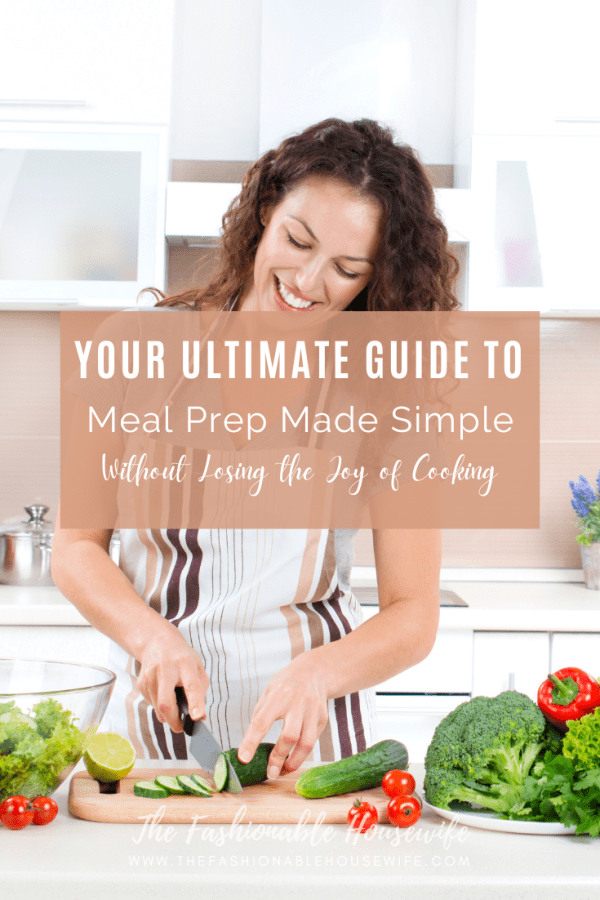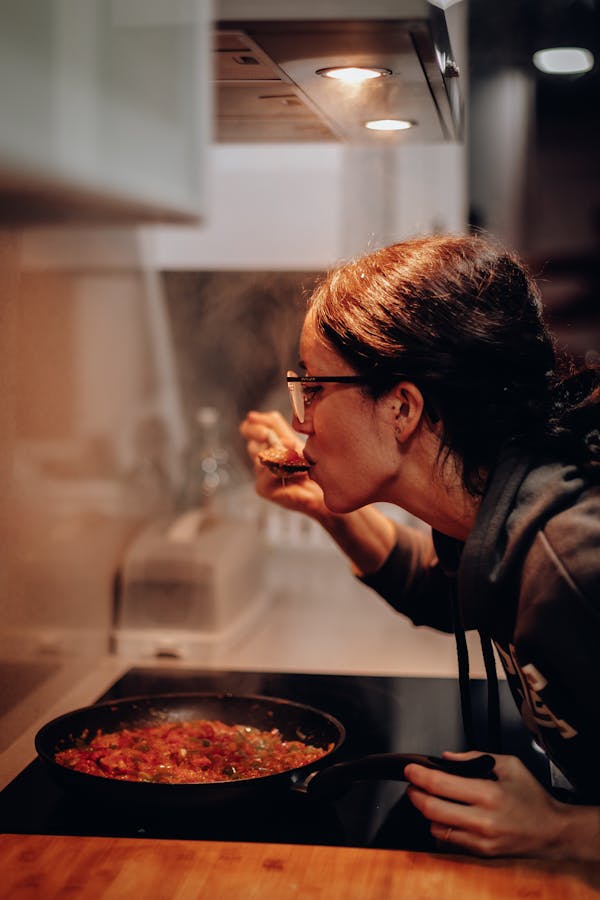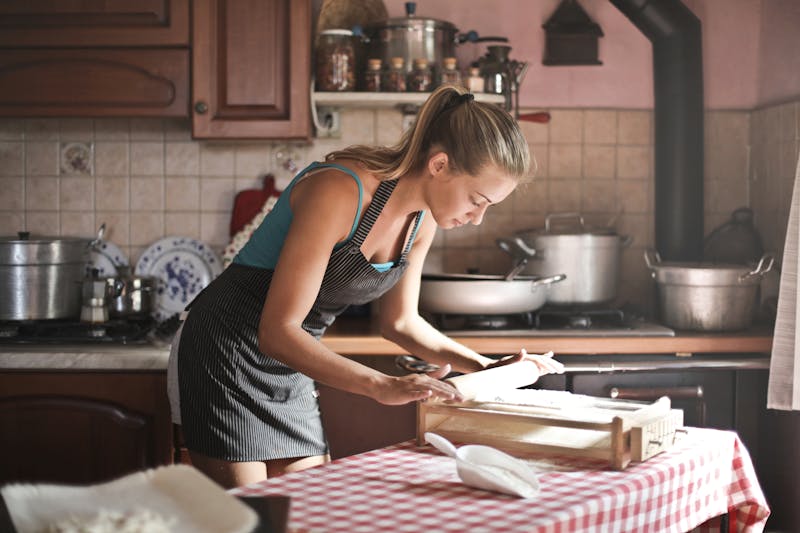Your Ultimate Guide to Meal Prep Made Simple Without Losing the Joy of Cooking

Weeknights often feel like a race against the clock. Between work deadlines, family responsibilities, and endless to-do lists, the question of What’s for dinner? can quickly become a source of stress. It is no surprise that many people turn to takeout or fall back on uninspired meals when time and energy run low.
Meal prepping offers a simple solution. It is not about strict routines or eating the same leftovers every day. It is about building a flexible, thoughtful system that makes cooking faster, easier, and more enjoyable. With a little planning and smart preparation, you can serve fresh, flavorful meals in minutes while still having time to relax and recharge. This guide will show you how to meal prep in a way that saves time and keeps your love for food alive.
Getting Started: Organizing Your Meal Prep
Meal prepping doesn’t have to mean spending your entire Sunday in the kitchen or eating the same tired leftovers every night. The key to successful, joyful meal prep lies in organization—choosing the right approach, planning efficiently, and setting yourself up for ease throughout the week.
Choose Your Meal Prep Style
Before you start chopping and cooking, decide what kind of meal prep suits your lifestyle and taste preferences. There’s no one-size-fits-all approach, and you can switch styles week to week based on your schedule and mood.
- Full Meal Prep: This is the classic method—cooking and portioning complete meals in advance. Think hearty soups, stews, pasta bakes, or grain bowls that reheat beautifully. Ideal for busy people who want grab-and-go options with zero thought required after work.
- Ingredient Prep: Instead of assembling full meals, prep individual components that can be mixed and matched. Roast a tray of vegetables, cook a pot of rice or quinoa, bake chicken or tofu, and whip up a couple of sauces or dressings. This keeps your meals flexible and allows for creative combinations on the fly.
- Hybrid Approach: Many find that a blend of both works best. Maybe you prep a big pot of soup for lunches, but keep dinners flexible with prepped ingredients. This prevents boredom while still saving time.
Plan Before You Prep
Good meal prep starts before you even set foot in the kitchen. A little planning goes a long way toward keeping things stress-free.
- Pick a Prep Day:
Most people choose Sunday or a quiet afternoon to prep for the week, but any day that fits your routine will work. Some even do two smaller prep sessions to split the load. - Create a Simple Menu:
You don’t need to plan every single bite. Aim for:
- 2–3 mains (e.g., a stir-fry, a baked dish, a hearty salad)
- 1–2 side dishes (roasted veggies, a grain salad, soup)
- Breakfasts, snacks, and grab-and-go items if needed
- Keep the menu balanced but flexible to allow for cravings or last-minute changes.
- Make a Smart Grocery List:
Once you have your menu, write a detailed grocery list organized by store sections (produce, pantry, dairy, etc.). Don’t forget to:
- Shop your pantry first to avoid duplicates.
- Opt for versatile ingredients that work across multiple meals (like spinach for salads, omelets, or pasta).
- Buy in bulk for staples like grains, beans, and proteins to save time and money.

Meal Prep in Action: Step-by-Step Workflow
With your plan in place and groceries ready, it’s time to bring meal prep to life. This section walks you through the exact steps to make your prep session efficient, enjoyable, and productive, without turning your kitchen into a second full-time job.
Prep Smart, Not Hard
Meal prep isn’t about cooking five complex recipes at once. It’s about using your time strategically by focusing on foundational components that can carry you through the week while still eating healthy.
Batch Cooking Basics:
- Grains: Cook large batches of rice, quinoa, couscous, or pasta. These form the base for countless meals and can be refrigerated or frozen in portions.
- Proteins: Bake, grill, or sauté proteins like chicken, tofu, ground turkey, or beans in bulk. Keep seasonings simple so you can switch up flavors later.
- Vegetables: Roast or steam a variety of veggies such as broccoli, bell peppers, sweet potatoes, and zucchini. Store them separately so they can be mixed and matched.
Multi-Tasking Magic
- Use your oven, stovetop, and slow cooker at the same time to maximize productivity.
- While grains cook, chop vegetables. While proteins bake, assemble snack packs or portion ingredients.
Chop and Store Raw Veggies
- Pre-chop salad ingredients, veggies for stir-fries, or fruit for breakfasts and snacks.
- Store in airtight containers or silicone bags for easy grab-and-go use.
Keep It Fresh and Exciting
One common complaint about meal prep is boredom. The secret to avoiding this is building in variety from the start.
Play with Flavors
- Prepare a couple of sauces, dressings, or spice blends such as chimichurri, peanut sauce, or herbed yogurt.
- A single protein can be used in different ways: serve it in a taco bowl one night and wrap it in a pita the next.
Think in Color and Texture
- Aim for visually appealing plates with a mix of leafy greens, colorful vegetables, crunchy toppings, and creamy dressings.
- Add freshness with herbs, lemon juice, toasted nuts, or quick-pickled vegetables just before serving.
Theme Your Week
- Rotate global inspirations like burrito bowls, Thai curries, Mediterranean salads, or noodle stir-fries to keep meals interesting.
Storage and Safety Essentials
Proper storage is key to making sure your hard work doesn’t go to waste and that everything stays safe to eat.
Food Safety Guidelines
- Refrigerated meals typically last three to four days.
- Frozen meals hold well for two to three months without sacrificing quality.
- Cool hot food before sealing containers to avoid condensation, which can lead to spoilage.
Labeling and Portioning
- Label every container with the date and contents. Even a simple sticky note works.
- Store meals in clear, stackable containers to save space and make everything easy to spot.
Portion Control
- Use divided containers, mason jars, or smaller storage to help manage portion sizes and prevent waste.

Keeping the Joy Alive: Practical Tips for Longevity
Meal prepping is most sustainable when it stays simple and enjoyable.
- Make it enjoyable: Listen to music, involve others, and create a relaxed prep atmosphere.
- Start small: Prep a few meals or snacks; don’t overcommit.
- Mix it up: Rotate recipes and try new flavors.
- Stay flexible: Skip weeks or change plans when needed.
- Reduce waste: Repurpose leftovers, freeze extras, and use scraps wisely.
- Maximize savings: Shop smart, store well, and plan ahead.
- Clean as you go: A tidy space keeps prep enjoyable and stress-free.
- Outsource when needed: On weeks when life is too full, consider hiring a private chef through platforms like yhangry to take care of the planning and cooking. For households with picky eaters or anyone eager to up their skills, booking a private cooking class can also turn mealtime into a fun and educational experience.
The best meal prep is the one that fits your life, brings ease to your days, and still leaves room for joy around the table.
